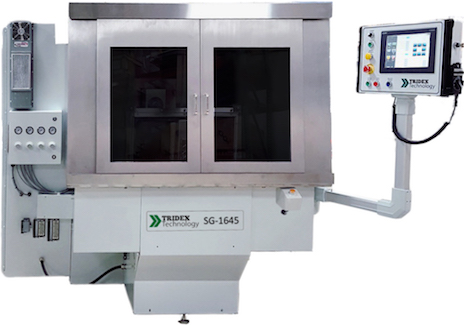Deburring for Applications with Tight Tolerances and Heat Sensitivity
Unlike conventional grinding, wire EDM, and lasers, Tridex Technology’s SG-1645 and SG-2060 electrochemical grinders quickly provide a burr-free cut in one pass with no heat-affected zone, recast layer, or work hardening of the material. Arthroscopic shaver teeth are commonly produced by conventional abrasive grinding, wire EDM, or laser cutting, but each method has disadvantages.
Posted: August 25, 2020
Conventional grinding requires a secondary process of deburring without damaging the cutting edge, and involves frequent wheel dressing to maintain the correct form. EDM and laser cutting burn away the metal at high temperatures, producing surface changes including a heat-affected zone, recast, and slag. EDM is a slow process, increasing cycle times. Laser requires significant post-processing to produce an acceptable sharp edge and surface finish.
Electrochemical grinding (ECG), on the other hand, provides a burr-free cut in one pass with no heat-affected zone, recast layer, or work hardening of the material. The ECG wheel requires less dressing and can last 20 times longer. The technology can cut full depth in one pass, resulting in typical cycle times of 10 seconds per part.
The SG-1645 and SG-2060 ECG surface grinders from Tridex Technology, a Glebar Company (Ramsey, NJ), feature CNC controls and high-precision components for high accuracy and repeatability. Electronic interlocks, safety-rated servos, and pneumatics are used to achieve CE and ISO 13849 safety certifications.
Optional pallet loader with 180-degree index table allows parts to be loaded during the grinding operation.

















